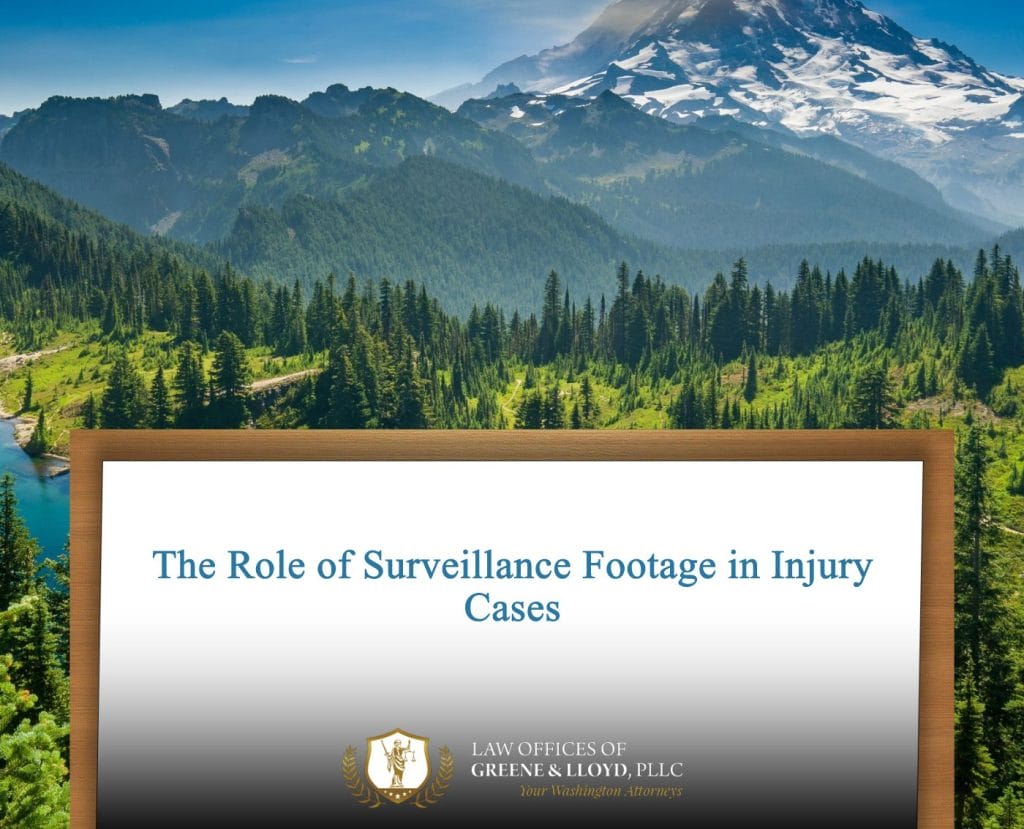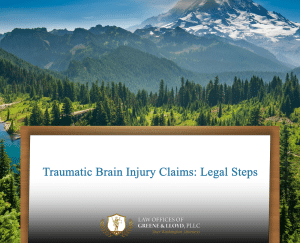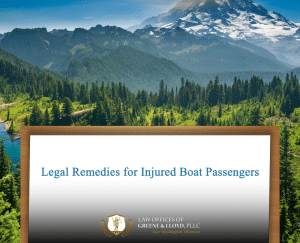## Understanding the Importance of Surveillance Footage in Injury Cases
In the realm of personal injury law, the inclusion of surveillance footage injury cases has become increasingly crucial. This type of evidence serves as a pivotal element in demonstrating the events leading to an injury. Surveillance footage can capture real-time incidents, providing a visual narrative of what transpired, which can be essential for establishing liability and corroborating witness statements. Attorneys often rely on such footage to bolster the credibility of their clients’ claims, making it an invaluable asset in litigation.
Analyzing surveillance footage goes beyond just the capture of an incident; it entails a careful examination of the context surrounding the injury. The footage might reflect vital aspects such as the environment, conditions at the time of the incident, and actions of the involved parties. Each frame can be a piece of a puzzle that helps paint a complete picture for judges and juries, making it a critical component in determining the outcome of personal injury cases.
For injured individuals, understanding the impact of surveillance footage can significantly affect their legal approach. Clients should be aware that such evidence could also be used against them, highlighting the importance of legal counsel during the investigation phase. Knowing the implications of surveillance footage in injury cases can empower clients to make informed decisions while navigating the complexities of the legal system.
## Defining Surveillance Footage Injury Cases
Surveillance footage injury cases primarily involve incidents where recorded video evidence is used to establish facts pertinent to a personal injury claim. These cases can encompass a variety of scenarios, including slip and fall incidents, vehicle accidents, and workplace injuries. When disputes arise concerning the details of an injury event, surveillance footage can provide clarity by revealing what actually occurred in a tangible format, helping to substantiate claims made by both plaintiffs and defendants.
One critical aspect of surveillance footage is its ability to capture objective evidence. This can include the exact moment a person slips and falls, whether proper safety measures were in place, or the speed of a vehicle involved in a collision. The clarity and detail provided by such footage can often mitigate conflicting eyewitness accounts, which tend to vary based on personal perceptions and biases. As such, relying on hard evidence through surveillance footage can lead to more fair and just outcomes in injury cases.
However, it is essential to note that surveillance footage does not operate in isolation. It must be interpreted within the legal context surrounding the incident. Legal practitioners analyze the footage alongside witness testimonies, physician reports, and other documentation to build a compelling case. Thus, understanding the definition and parameters of surveillance footage injury cases is crucial for anyone involved in a personal injury dispute.
## The Significance of Surveillance Footage in Injury Cases
The relevance of surveillance footage in injury cases cannot be overstated, especially in today’s digitally driven world, where video recording devices are commonplace. This type of evidence can significantly influence the trajectory of a case, making it imperative for both plaintiffs and defendants to understand its impact. For claimants, having access to surveillance footage can make the difference between a successful claim and a denial of compensation.
The importance of this topic lies in the role that visual evidence plays within the justice system. Jurisdictions increasingly recognize the weight that surveillance footage carries, often considering it as a form of corroborating evidence that lends credibility to a party’s version of events. In many cases, having compelling video evidence can prompt insurance companies to settle disputes more favorably for the injured party, avoiding the costs and uncertainties associated with lengthy litigation.
Moreover, the conversation around surveillance footage in injury cases is continually evolving with advancements in technology. The proliferation of closed-circuit television (CCTV) cameras, personal devices, and advanced monitoring systems means that more incidents are being recorded than ever before. Understanding how this technology impacts legal proceedings is essential for practitioners and clients alike, as it opens new avenues for evidence gathering and case building.
## Legal Context and Framework Surrounding Surveillance Footage in Injury Cases
Navigating the legal framework pertaining to surveillance footage injury cases requires an understanding of various factors including admissibility, privacy considerations, and the nuances of evidential standards. Courts often assess the validity and reliability of surveillance footage before it can be used to support claims in a trial setting. This assessment may involve various tests, ensuring the footage is authentic, relevant, and offers an accurate portrayal of the events in question.
The admissibility of surveillance footage hinges on several legal principles, including the rules of evidence that govern how proof is presented. For instance, the footage must be shown to accurately reflect the incident, without any alterations or manipulations that could misrepresent the facts. Challenges to the reliability of such footage often come from opposing counsel, who may argue it should not be included based on potential biases or incorrect interpretations of what the footage depicts.
Privacy issues also play a significant role in the legal landscape surrounding surveillance footage. In many jurisdictions, laws protect individuals against unwarranted surveillance, emphasizing that certain types of recordings may require consent. Personal injury cases must carefully consider these regulations to ensure that any evidence obtained is both ethically sourced and compliant with established laws. All these elements intertwine to shape how surveillance footage can be utilized effectively in injury cases, emphasizing the importance of due diligence when handling such evidence.
## Real-Life Cases Involving Surveillance Footage in Injury Claims
To fully grasp the impact of surveillance footage in injury cases, it is helpful to examine tangible examples where this evidence played a critical role in determining the outcome. Numerous cases illustrate how video evidence can dramatically shift the landscape of personal injury claims, providing clear insight into the effectiveness of visual proof in a court of law.
In one notable case, an individual claimed to have experienced severe injuries from a slip and fall in a retail store. The defense retrieved surveillance footage showing the claimant actively engaging in physical activities shortly after the alleged incident, which contradicted their narrative of debilitating injuries. Consequently, the footage constituted strong evidence that played a pivotal role in the court’s decision, ultimately leading to a dismissal of the claimant’s case.
Another significant example occurred in a vehicular accident case, where a plaintiff asserted that they were struck by a negligent driver. The defense presented surveillance footage confirming that the plaintiff had crossed into traffic illegally, challenging their claim of innocence. This evidence not only shifted liability but also complicated the plaintiff’s case substantially, illustrating how surveillance footage can serve as a double-edged sword in injury claims.
These real-world scenarios highlight the powerful role that surveillance footage can play in personal injury cases. They emphasize the necessity for injured parties to address all angles of their claims, as video evidence can significantly influence legal battles and outcomes.
## Practical Steps for Handling Surveillance Footage in Injury Cases
When navigating an injury case where surveillance footage is involved, there are several practical steps that claimants and their attorneys should undertake to ensure the effective use of this evidence. The initial step is to promptly identify any potential surveillance sources relevant to the incident. Clients should make a point to gather information about where the incident transpired, including businesses, public places, or any location that might have surveillance cameras operational at the time of the injury.
Once potential surveillance footage sources are identified, another vital step is to request that this evidence be preserved. Since footage may be overwritten or deleted after a certain period of time, ensuring that the relevant videos are secured promptly is paramount. This often involves direct communication with property owners or managers and may necessitate a formal legal request or subpoena to secure access.
Involving legal representation at this stage is crucial. A qualified attorney can navigate the legal landscape surrounding the acquisition and usage of surveillance footage, ensuring that all necessary protocols are followed. This includes checking the admissibility of the footage, interpreting it within the context of the case, and leveraging this evidence to strengthen the overall claim. By following these steps, injury claimants can better prepare themselves for the complexities that come with surveillance footage in their cases.
## Avoiding Common Pitfalls in Surveillance Footage Injury Cases
While the inclusion of surveillance footage can be advantageous in injury cases, there are common mistakes that individuals often encounter that can hinder their claims. One frequent pitfall is failing to act swiftly after an incident occurs. Time is of the essence when it comes to securing surveillance footage, as cameras may not retain evidence indefinitely. Injured parties may find that critical footage has been lost if they wait too long to request its preservation.
Another mistake is disregarding the importance of obtaining legal representation early in the process. Many individuals attempt to navigate their personal injury claims without professional guidance, which can lead to misunderstandings about how to handle surveillance footage. Without the proper expertise, individuals may misinterpret the footage or fail to present it appropriately in court, undermining their case.
Additionally, claimants should avoid making statements that contradict the evidence captured on surveillance footage. It’s essential to maintain consistency in recounting the events leading up to the injury. Discrepancies between one’s statements and what the footage depicts can be exploited by opposing counsel, potentially leading to negative implications for the claimant’s credibility. Awareness of these pitfalls is paramount for anyone involved in surveillance footage injury cases, helping prevent missteps that could derail their claims.
## Knowing When to Consult with an Attorney
Understanding when to seek the counsel of a legal professional in surveillance footage injury cases is crucial for maximizing the chances of a successful outcome. Individuals who have been injured should consult with an attorney as soon as possible after the incident—delaying this process can hinder your case, especially when it comes to obtaining time-sensitive evidence such as surveillance footage.
An attorney well-versed in personal injury claims will provide insights into the strength of your case and the possible ramifications of surveillance footage. They can assess the footage’s impact on your claim and advise you on necessary steps to secure your interests. Consulting with a legal professional early in the process can help claimants navigate the complexities of their cases more effectively while ensuring that they are in compliance with legal standards and requirements.
Moreover, individuals should not hesitate to seek legal assistance if they experience resistance or denial from property owners regarding access to surveillance footage. A knowledgeable attorney will possess the skills to facilitate the process and can issue requests or subpoenas to ensure compliance. Engaging legal representation early on not only helps in securing vital evidence but also provides a strategic advantage throughout the duration of a personal injury claim.
## Advantages of Legal Representation for Surveillance Footage Injury Cases
When dealing with surveillance footage injury cases, having legal representation can provide numerous advantages. First and foremost, attorneys have a comprehensive understanding of the laws and regulations governing video evidence in personal injury cases. This knowledge helps claimants ensure that any footage obtained adheres to the necessary legal standards for admissibility in court.
Moreover, legal professionals can effectively analyze the surveillance footage and interpret its implications for their clients’ claims. They can assess the relevance of specific frames, demystifying aspects of the footage that may not be immediately apparent to laypersons. This deep comprehension can shape the legal strategy used in court, ultimately determining how effectively the evidence is presented to support the client’s position.
Additionally, attorneys can facilitate interactions with opposing parties and insurance companies, negotiating on behalf of their clients. A well-connected legal representative can leverage video evidence during settlement discussions, often encouraging favorable outcomes without the need for prolonged litigation. Legal representation creates essential leverage for injury claimants, ensuring that their rights and interests are protected throughout the process.
## How Law Offices of Greene & Lloyd, PLLC Can Assist You
At Law Offices of Greene & Lloyd, PLLC, we specialize in guiding clients through the complexities surrounding surveillance footage injury cases. Our legal team understands the intricacies of video evidence and its implications within personal injury claims, positioning us as a valuable ally for those seeking justice. We prioritize thorough investigation and evidence gathering, ensuring that we uncover all available footage relevant to your case.
With our extensive experience serving clients throughout Washington State, we are equipped to address potential challenges proactively. Our firm takes pride in our detailed approach to advocacy, helping clients navigate the often daunting legal landscape while ensuring their rights are upheld. In surveillance footage injury cases, we provide comprehensive strategies that leverage the power of visual evidence to bolster claims, leading to optimal outcomes for our clients.
Working with Law Offices of Greene & Lloyd, PLLC means having dedicated advocates on your side, committed to demystifying the legal process while fighting for your best interests. Our emphasis on personalized service and responsiveness ensures that clients stay informed and engaged while pursuing their claims. Allow us to assist you in navigating your surveillance footage injury case, ensuring you receive the representation that you deserve.
## Frequently Asked Questions About Surveillance Footage Injury Cases
## Additional Resources for Surveillance Footage Injury Cases
While legal representation is essential in navigating surveillance footage injury cases, there are also various resources available for individuals seeking to educate themselves further. Consider consulting legal websites, published articles by personal injury professionals, and online legal forums that provide information concerning the role surveillance footage plays in claims.
Local government websites may provide insights into relevant statutes related to privacy and surveillance. Additionally, victims groups and advocacy organizations can offer support networks for individuals navigating the aftermath of injury incidents, helping them connect with others who have faced similar issues.
Educational resources such as webinars, workshops, or community legal aid programs can also provide valuable guidance on how to manage evidence in personal injury cases effectively. Engaging with these resources can better equip individuals with knowledge and strategies to handle surveillance footage as part of their claims.




